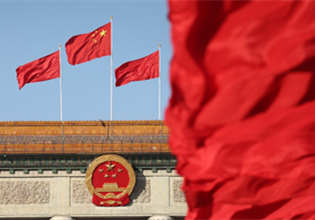Hong Kong, Macao media students conclude visit in Inner Mongolia
The “Fan Changjiang Action” that brought media students from Hong Kong and Macao to Inner Mongolia helped them understand mainland and national conditions, said Wu Lan, head of Inner Mongolia’s department of publicity while meeting with the delegation on August 25.
Fang Changjiang (1909-1970) was a Chinese journalist and the author of The North Western Part of China, which included a series of news stories he editorialized as a correspondent in Northwest China for Da Kung Pao Newspaper in 1935.
2015 marks the 80th anniversary of Fan’s journey in Northwest China and Da Kung Pao has organized 18 Hong Kong and Macao students majoring in media to visit Inner Mongolia, along Fan’s trail.
Started on August 5, the 10-day tour included visits and interviews in the cities of Hohhot, Baotou, Ordos, Bayanur and Ulanqab.
Some people from Hong Kong and Macao do not have strong communication with mainland, a problem that can be solved for the younger generation in the long term. Therefore it’s important to strengthen ties between Hong Kong and Macao students and the mainland, said Wu Lan, commenting that Fan Changjiang Action is significant and expects more students to come to Inner Mongolia.
Li Dahong, chief editor of Da Kung Pao and head of the delegation said the tour was designed in accordance with Fan’s journey, through which the students had close experience of the region’s history and current development.
He said Fan’s reporting journey went deep into reality with strong social responsibilities. The tour along Fan’s trail for these future journalists was full of positive energy, Li said. .
Inner Mongolia autonomous region was the first ethnic autonomous region in China, Wu said. Through Inner Mongolia, students can learn more about ethnic autonomous policies, and more about ethnic areas and border areas.
By taking use of Fan Changjiang Action, Li claimed that Da Kong Pao will play a better role as a bridge between Inner Mongolia and Hong Kong and introduce the outside world to the development and changes of Inner Mongolia.



 Print
Print Mail
Mail





